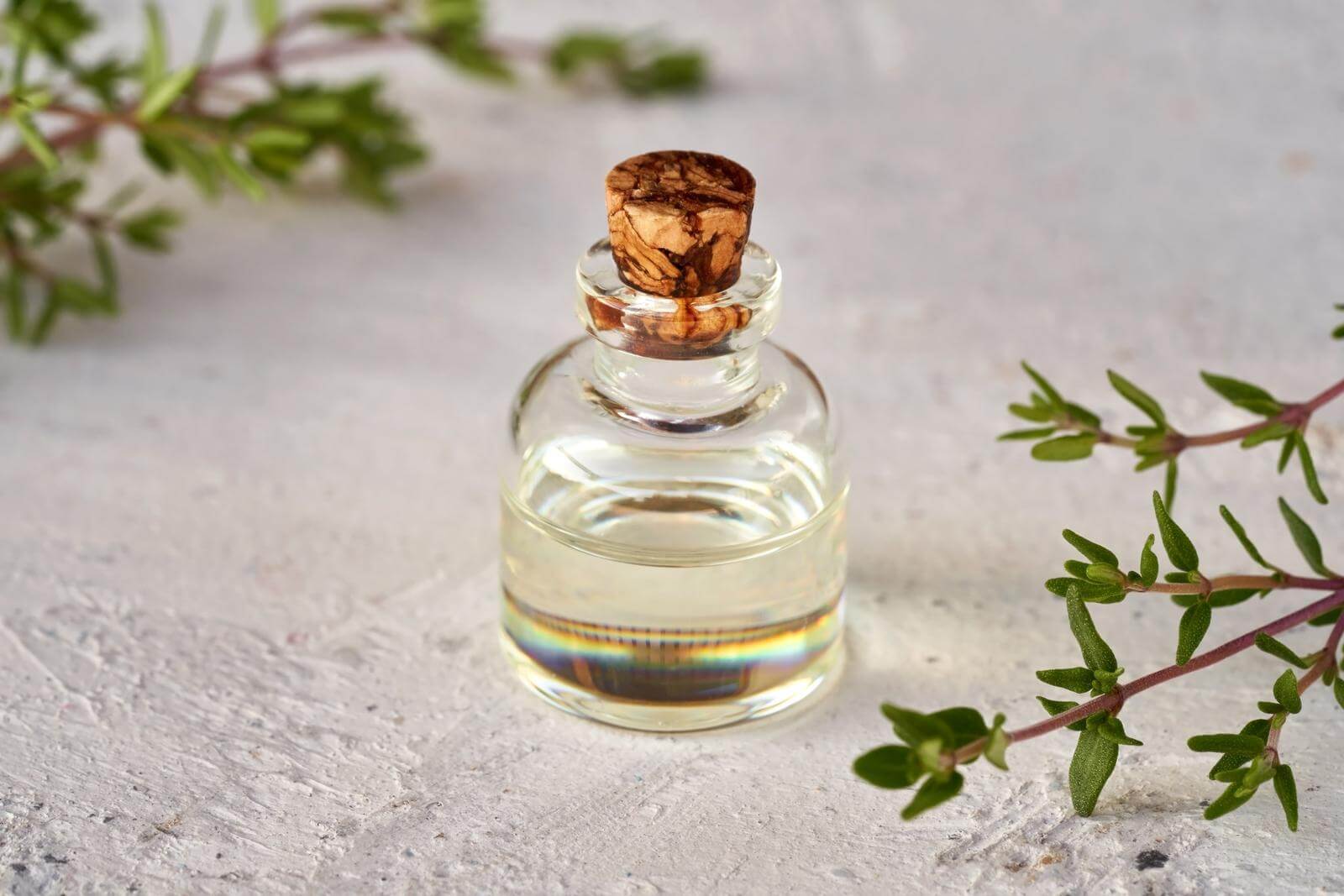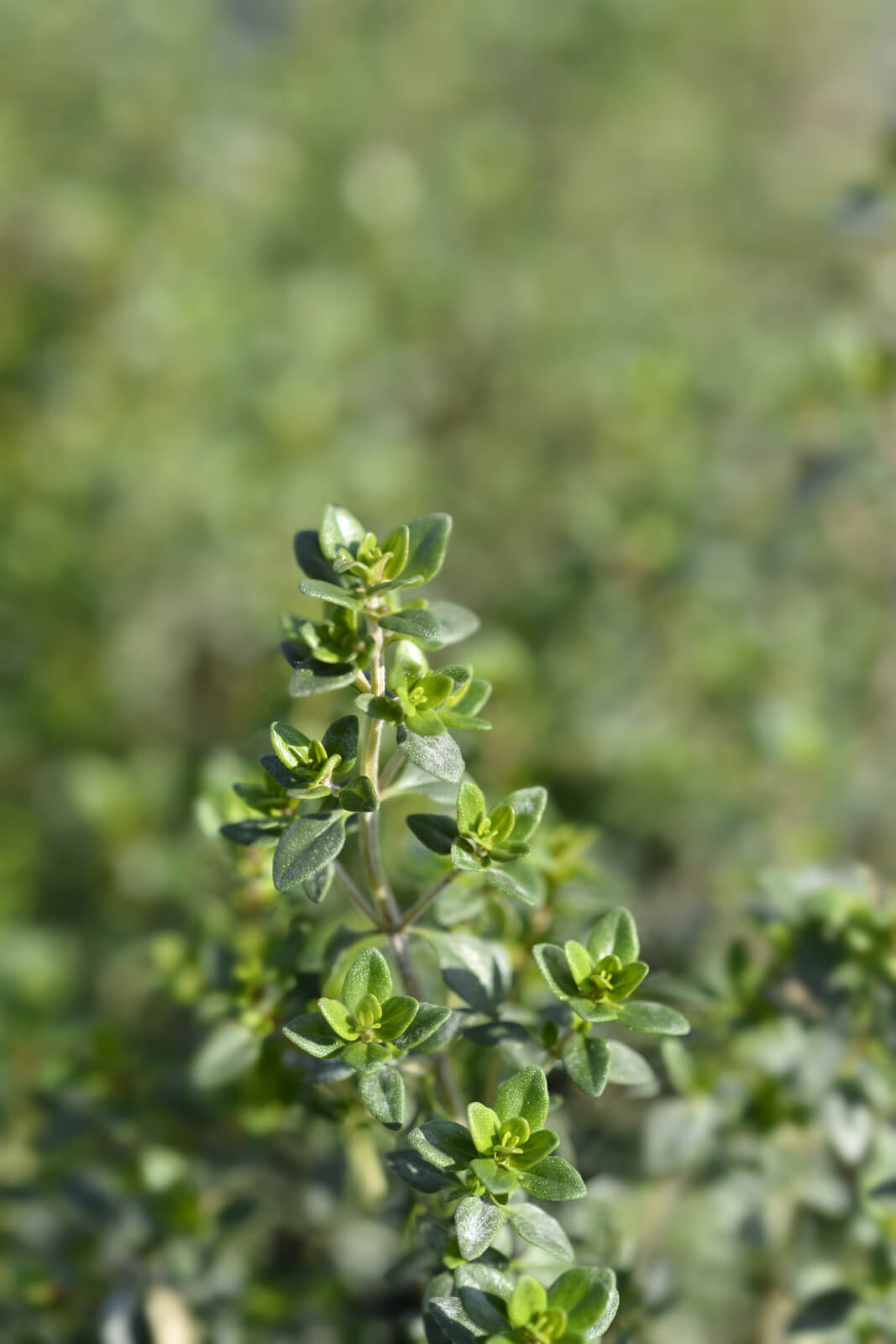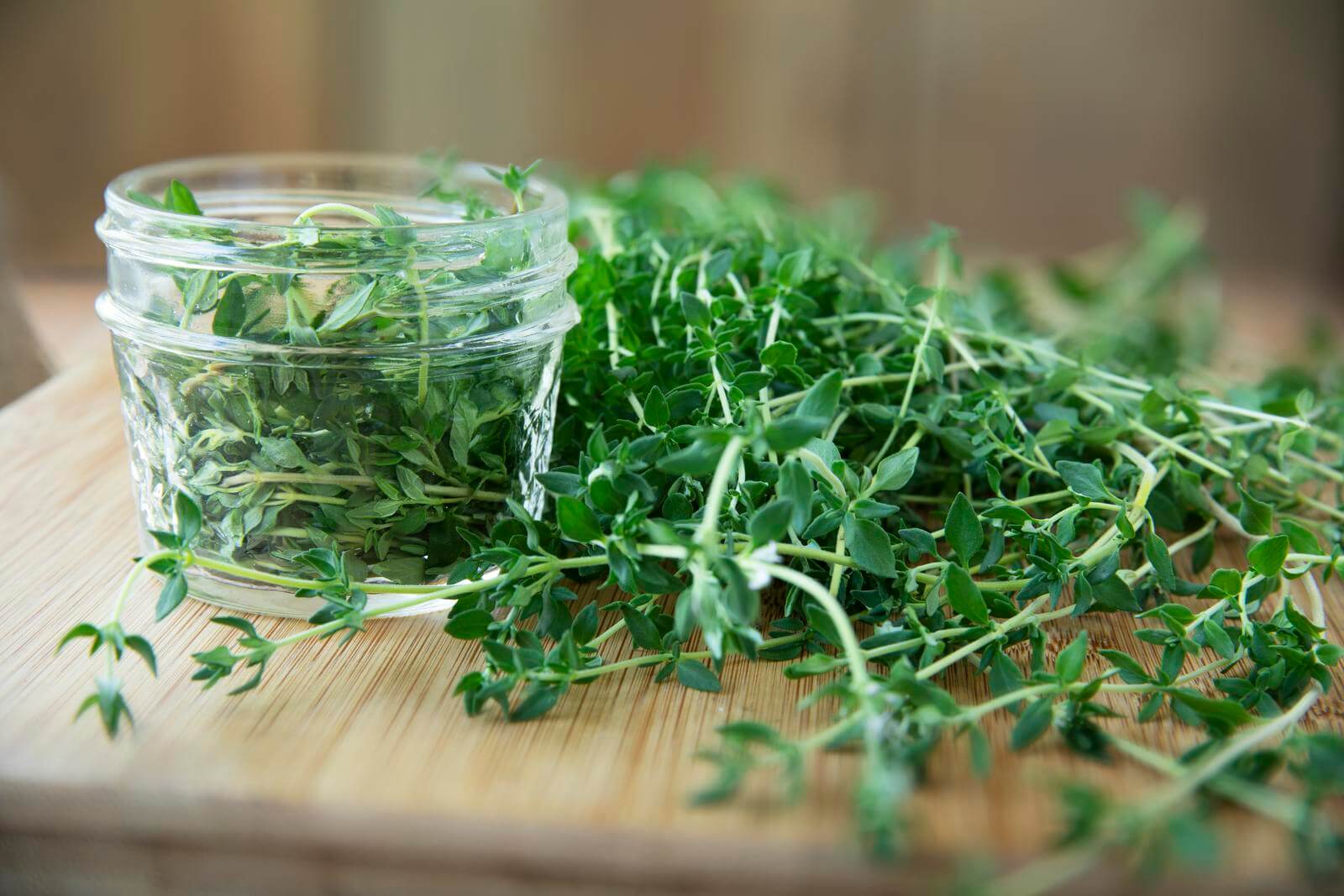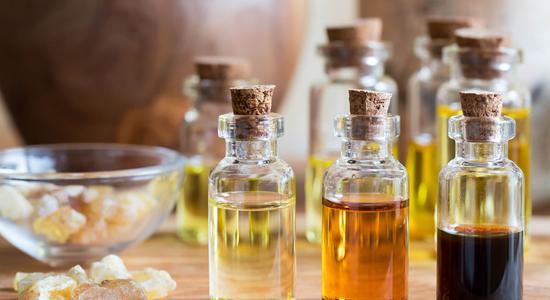See all "Essential Oil" Section Topics

Yes it is true, you can effectively use essential thyme oil (Thymus vulgaris) for yeast infections. Thyme oil has been shown to be one of the most efficacious Candicidal plant oils. It frequently shows the greatest ability to inhibit Candida albicans compared to other essential oils.
If you plan on using only one essential oil to stop your yeast vaginitis, thyme oil would be a great choice.
The two important chemicals in this essential oil are thymol and carvacrol. And, it should be noted, that there may always be a significant amount of thymol in this oil. However, it appears that the concentration of carvacrol varies drastically between oils made from Thymus vulgaris.
There is not much essential oil in the thyme plant; according to the European Pharmacopoeia, the minimum amount of oil in the plant is 12 mL for every kilogram. Research states, that the chemical constituents of thyme oil can vary significantly.
By comparing various studies done on the chemical composition of thyme oil, these fluctuations become clear. The chemicals present in a variety of this essential oil will depend on several factors. These factors include the cultivation process used, the region the plant was grown, and the environment. However, it is certain that this essential oil has wonderful antioxidant and antimicrobial ability (Boruga O., Et al; 2014).
I like to also mention that using just one essential oil for a remedy is probably not the best method to undertake. The renowned Dr. James A. Duke; author of several books relating to herbal medicine; stated in his book, The Green Pharmacy, that mixing herbs together is often wise. Using multiple herbs together can possibly create a positive synergy and result in a more potent natural remedy.
Different herbs contain different chemicals, and these may often do what another chemical cannot. Additionally, some chemicals may become stronger or react with other chemicals to create more beneficial compounds. Therefore, consider mixing a few different essential oils together to remedy fungal infections.
You can find a list of other essential oils to use on this page: essential oils for yeast infection.
A 1/2 Day & Yeast is Gone!
Linda Allen suffered from yeast infections for years. Through researching natural medicine & Candida, she found an efficacious solution!
Linda is one expert you want on your side! Let her show you how to get rid of a superficial yeast infection in just 12 hours; AND, keep it gone!
A 60-day, 100% money back guarantee is provided.
Visit Official Site!Research

One study, published in the Journal of Essential Oil Research [Volume 11, Issue 1, 1999], studied oil made from nine Thymus vulgaris chemotypes; and, made some interesting discoveries. Thyme essential oil and carvacrol, were shown to be more powerful than even cinnamon essential oil at fighting Candida albicans. Carvacrol is a major component of essential thyme oil; comprising approximately 58% of the oil (graph of oil constituents).
According to this study, the presence of carvacrol and other primary components, is the primary reason this oil possesses anti yeast activity.
Perhaps thyme oil made from any species of Thymus will be capable of stopping a yeast infection. A study, published in the Journal of Medical Microbiology (2006, 55, 1367–1373), concentrated on a different species of thyme: Thymus pulegioides.
One part of the study sought to discover how essential oil from pulegioides fared as a Candicidal. This is relevant as it can give us a clue to how different types of thyme oil may work against a yeast infection.
The main constituents of Thymus pulegioides essential oil the researchers found, were the following:
- Thymol (26%)
- Carvacrol (21%)
The other chemicals found in this oil were many, most comprising no more than 8% of the total oil volume; with several showing much lower concentrations.
Both thymol and carvacrol showed anti yeast activity and were able to totally kill several different species of Candida (including glabrata). Both of these chemicals also were able to kill fungus from other genuses as well. Thus, we are perhaps able to assume it would be a capable comprehensive killer of several types of fungus.
Carvacrol did seem to show a greater efficacy at killing Candida yeast, and the other fungi, than thymol. Consequently, Thymus vulgaris may not be the best variety of thyme to use; given it has low carvacrol content. Thymus pulegioides contains much more carvacrol than the oil of thymus valgaris.
Additionally, the researchers in this study also tested the conventional prescription drug fluconazole. This prescription drug seemed to be much weaker than the essential oil. It took far greater amounts of this drug to achieve the death of Candida than the essential oil. This is perhaps an important thing to know if you thought about using this drug. Thyme oil would be a significantly more potent option for controlling Candida.

Another study, published in Phytotherapy Research [18.12 (2004): 990-995], found that essential thyme oil derived from Thymus vulgaris was a potent inhibitor of Candida albicans. The study found that Candida albicans was inhibited 80% by a very minute amount of thyme oil. Only 0.016 mcL / mL of the essential oil was required for this inhibition.
The action was suspected to be due to the high amount of thymol present in the oil—the oil was comprised of 63.2% thymol. Also, when thyme oil was used in combination with amphotericin B, there was a synergistic effect. The combination of amphotericin B and thyme oil was suggested as a possible treatment plan for mycoses by the study’s researchers; which would be better than the prescription drug by itself.
Another study contained summations of research relating to thyme oil and its chemical constituent’s activity against Candida species. The study was published in Molecules [17.12 (2012): 14418-14433]. The researchers relate, that a typical major component of Thymus vulgaris essential oil, p-Cymene, by itself has strong antifungal activity.
Thus, it is not entirely necessary to focus on the amount of thymol present in thyme oil; as it is not the only chemical with antifungal efficacy against Candida. The following quote was taken from the study relating to their overview of some relevant literature. Note how thyme oil is an effective treatment even for drug resistant Candida.
After the study quotation, is a chart showing the chemical constituents of the Thymus vulgaris essential oil used in this study. Other thyme essential oils may share a similar chemical profile.
Many investigators have demonstrated the antifungal potential of thymol against species of yeasts and filamentous fungi. Thymol inhibits the growth of Candida species sensitive and resistant (clinical isolates) to azoles and amphotericin B, and interferes with the formation and viability of hyphae of C. albicans. However, there are few studies on the antifungal activity of p-cymene... However, with regard to opportunistic yeasts, thymol and p-cymene, alone or in combination, exhibit strong antifungal activity against Candida spp..
http://dx.doi.org/10.3390/molecules171214418

Another study, found that thyme oil was a potent inhibitor of Candida species that were resistant to the antifungal drug fluconazole. The study was published in the Canadian Journal of Microbiology [54.11 (2008): 950-956]. There were several different species of Candida used by the researchers. The species used included C. albicans, C. krusei, C. dubliniensis, C. glabrata, and C. tropicalis.
The study found that the drug resistant Candida species were all inhibited by thyme oil (the oil was derived from Thymus vulgaris). The drug resistant Candida species were more capable of tolerating thyme oil than strains susceptible to fluconazole; however, they could still be inhibited successfully by this natural oil.
The study also utilized other essential oils, and found that oregano oil (derived from Origanum vulgare) was more effective than thyme oil at inhibiting Candida.
Eliminate Bacterial Vaginosis & Vaginal Odor
Jennifer O’Brien is one prominent expert on BV that knows how to get rid of vaginal odor. BV is a common infection that you don’t have to put up with.
Jennifer will show you how to naturally eliminate vaginal odor in just 3 days.
A 60-day, 100% money back guarantee is provided.
Visit Official Site!How to Use Thyme (Thymus vulgaris) Oil
Thyme oil in various ways; just like any essential oil, you want to be careful to use it safely. Many essential oils are poisonous, and possibly even lethal, when large enough amounts (say a few tablespoons) are ingested.
Yet, using it safely should present little to no risk to most individuals. This essential oil can be used internally to help stop a gut yeast infection. Other essential oils can be used in tandem with thyme oil. This is a great strategy to employ to stop a fungal problem!
- Topical Use: You may use this oil in its undiluted form directly on the exterior of the body in the area of concern.
- Oral Use: Thyme oil is generally regarded as safe for human consumption by the U.S. FDA. In general, use 1 drop of this oil in 8 ounces of liquid or 2 teaspoons of honey. This dilution may not be adequate and you might have to use a weaker concentration; as this oil can potentially irritate the body’s mucous membranes. Do not let children of 6 years of age or younger ingest this oil!
- Cautions: Avoid using this oil if you are pregnant. If you suffer from high blood pressure (hypertension), then use this oil with caution. This oil can irritate the mucous membranes of the body and the skin. Try doing a patch test of a small amount of the oil on the skin of your arm before you use it on a more sensitive area of the body.
Clair Goodall: Author & Nature Lover
Clair Goodall is a bee-obsessed natural medicine convert from Minnesota. She is one expert you might want to know more about!
Clair will help you protect you and your family from toxic products and chemicals and help you discover solutions from nature.
Also, Clair’s book is backed by a 60-day, 100% money back guarantee
Visit Official Site!Other Uses for Essential Thyme Oil

- Antibiotic — With the rise of bacteria that is resistant to conventional drugs, it is becoming more important to find a way to effectively halt bacterial infections. Thyme oil can be used, as perhaps, a stronger antibiotic that is safe and natural. Often, natural antibiotics do not kill beneficial probiotic bacteria along with the harmful pathogenic bacteria. Keeping your body full of good bacteria is key for keeping yeast from overgrowing and causing harm.
- Skin Problems — As mentioned, thyme oil is antibiotic; therefore, it could be used to help kill acne and improve the complexion of the skin. It may even help add tone to aged skin, and give you a more youthful appearance.
- Insect Repellant — Thyme oil can be used as an insect repellant—helping to keep pesky bugs at bay. Try using citronella essential oil and vanillin with thyme oil for perhaps an even better insect repellant. Try using this mixture in candels, and topically on your skin to keep the bugs away.
- Chronic Fatigue Syndrome (CFS) — Thyme oil may be helpful in alleviating CFS. It also may be able to help you fight insomnia. If you are having difficulties with feeling awake or getting to sleep at night, thyme oil could be one oil to try for help in this way.
A Natural, 12 Hour Yeast Infection Cure

According to a research paper published in Clinical Microbiology Reviews [12.1 (1999): 80-96], Candida species are quite ubiquitous organisms. Candida are most frequently present in the mouth; and, live in 31% to 55% of healthy people. The species that causes approximately 70% to 80% of all Candida infections is C. albicans.
The Chinese Journal of Obstetrics and Gynecology [2011 Jul;46(7):496] reports there appears to be a correlation between intestinal Candida infections and vaginal yeast infections. And, this provides a clue, as to why yeast infections in general, can reoccur.
This study states, in 148 cases of vaginal candida infections, 33.1% of the women were infected in both the intestines and vaginal area. The recurrence rate of yeast infections, in women with simultaneous intestinal infection, was significantly higher than for women who did not have an intestinal infection.
This study concluded that vaginal yeast infections are highly associated with simultaneous intestinal Candida infection.
As research appears to indicate, systemic Candida infections can and do happen. A more systemic Candida infection may primarily get a foothold in the intestines; and cause a wide array of problems. If your yeast infections keep happening, a systemic Candida problem may be why.
One woman who suffered from a systemic Candida infection, for about 12 years, was Linda Allen. The systemic Candida infection that attacked Linda caused a wide range of health problems in addition to yeast infections. Some of these problems, Linda describes in her own words in the following quote:
To be honest, it was hard to pinpoint exactly what was wrong: I wasn’t really sick, but I wasn’t really well either. I had listlessness, fatigue, brain fog, stomach ailments, unexplained rashes, skin infections, and so on. It seemed like every day brought a new challenge.
My energy was sapped and I felt exhausted, which affected my grades and put a big dent in my social life.
Linda Allen’s symptoms included an embarrassing vaginal discharge, severe itching, and burning sensations. Her infections were difficult to deal with, and Linda’s health problems cost her financially as well. Linda states these infections of Candida can become excruciating when they happen as frequently as a menstrual period.
Yet, Linda spent a great deal of time in research; and even questioned health professionals who were kind enough to share some time with her. Linda even tried an array of purported "cures." Although it took a while, eventually, Linda put together a natural treatment plan she hoped would solve her Candida situation.
After spending about a year refining her new approach, Linda tried her system on herself. It worked amazingly well. Linda even returned to a few medical doctors to get tested for the presence of infections. These tests revealed all indicators of infection had vanished! Linda was indeed well again, after such a long, difficult journey.
Linda has since published a book detailing how to copy her success. She also includes a 12 hour yeast infection cure that can get rid of a superficial (such as a genital yeast infection or oral thrush) yeast infection in about 12 hours.
Linda’s publisher protects those who get her book with a 60 day, 100% money back guarantee. Linda’s publisher, a subsidiary of the United States based firm Keynetics Incorporated, is a reputable digital retailer that has been around for a long time.
They have great customer service, and make getting a full refund on Linda’s book quick and easy. If you’re not satisfied, you can quickly get all your money back.
If you would like to learn more about Linda’s journey to freedom from Candida, see reviews of others who tried her natural system, or find out more about her efficacious book; you can find more information at Linda Allen’s website.
Author: Mr. Nicholas Gross

Nick Gross is a natural medicine enthusiast who has been researching and writing about natural medicine since 2008. Nick is primarily a web developer but also researches and authors written and video content about natural health. Nick has a bachelor’s degree in Management Information Systems from the University of Northern Iowa.
Disclaimer
The information on this website is not a prescription for anyone. This information is for informational or educational purposes only, and is not a substitute for professional medical advice or consultations with healthcare professionals.
Affiliate Disclosure
Some of the links provided on this website are affiliate links. When a purchase is made through these links, Candida Hub earns money from commission. This helps to keep the website up and helpful to people for free. Thank you for any support!
Stay Up to Date
If you enjoyed this article, consider following / liking our Facebook page. This page is primarily utilized to alert followers of new articles that are put on Candida Hub. Candida related news is also discussed. While you are there, you can see what has been more recently added to Candida Hub.
SOURCES:
- https://www.ncbi.nlm.nih.gov/pmc/articles/PMC4391421/ — Boruga O, Jianu C, Misca C, Gole? I, Gruia AT, Horhat FG. Thymus vulgaris essential oil: chemical composition and antimicrobial activity. Journal of Medicine and Life. 2014; 7 Spec No. 3(Spec Iss 3): 56-60. PubMed PDF
- http://dx.doi.org/10.1080/10412905.1999.9701086 — thyme oil is better than cinnamon oil at treating yeast infections — Antifungal Activity of Selected Essential Oils, Cinnamaldehyde and Carvacrol against Malassezia furfur and Candida albicans. Hicham Ferhout , Jacques Bohatier , Jean Guillot , J. C. Chalchat. Journal of Essential Oil Research Vol. 11, Iss. 1, 1999
- http://www.ncbi.nlm.nih.gov/pmc/articles/PMC2789773/ — components of thyme oil — Hotta, Mariko et al. “Carvacrol, a Component of Thyme Oil, Activates PPARα and Γ and Suppresses COX-2 Expression.” Journal of Lipid Research 51.1 (2010): 132–139. PMC. Web. 12 July 2015.
- http://jmm.sgmjournals.org/content/journal/jmm/10.1099/jmm.0.46443-0 — Antifungal activity of the essential oil of Thymus pulegioides on Candida, Aspergillus and dermatophyte species. Journal of Medical Microbiology Volume 55, Issue 10
- Google Books — Duke, J. A. (1997). The green pharmacy: New discoveries in herbal remedies for common diseases and conditions from the world's foremost authority on healing herbs. Emmaus, Pa: Rodale Press.
- http://dx.doi.org/10.1002/ptr.1594 — Giordani, R., et al. "Antifungal effect of various essential oils against Candida albicans. Potentiation of antifungal action of amphotericin B by essential oil from Thymus vulgaris." Phytotherapy research 18.12 (2004): 990-995.
- http://dx.doi.org/10.3390/molecules171214418 — de Lira Mota, Kelly Samara, et al. "Antifungal activity of Thymus vulgaris L. essential oil and its constituent phytochemicals against Rhizopus oryzae: interaction with ergosterol." Molecules 17.12 (2012): 14418-14433. PDF Available Here, PubMed
- http://dx.doi.org/10.1139/w08-097 — Pozzatti, Patrícia, et al. "In vitro activity of essential oils extracted from plants used as spices against fluconazole-resistant and fluconazole-susceptible Candida spp." Canadian journal of microbiology 54.11 (2008): 950-956. PubMed
- Google Books — Higley, Connie, and Alan Higley. Reference guide for essential oils. Abundant Health, 1998.
- https://doi.org/10.1128/CMR.12.1.80 -- Fidel, Paul L., Jose A. Vazquez, and Jack D. Sobel. "Candida glabrata: review of epidemiology, pathogenesis, and clinical disease with comparison to C. albicans." Clinical Microbiology Reviews [12.1 (1999): 80-96].
- https://pubmed.ncbi.nlm.nih.gov/22041440/ -- Lin XL, Li Z, Zuo XL. "Study on the relationship between vaginal and intestinal candida in patients with vulvovaginal candidiasis." Chinese Journal of Obstetrics and Gynecology (Zhonghua fu chan ke za zhi). [2011 Jul;46(7):496].







